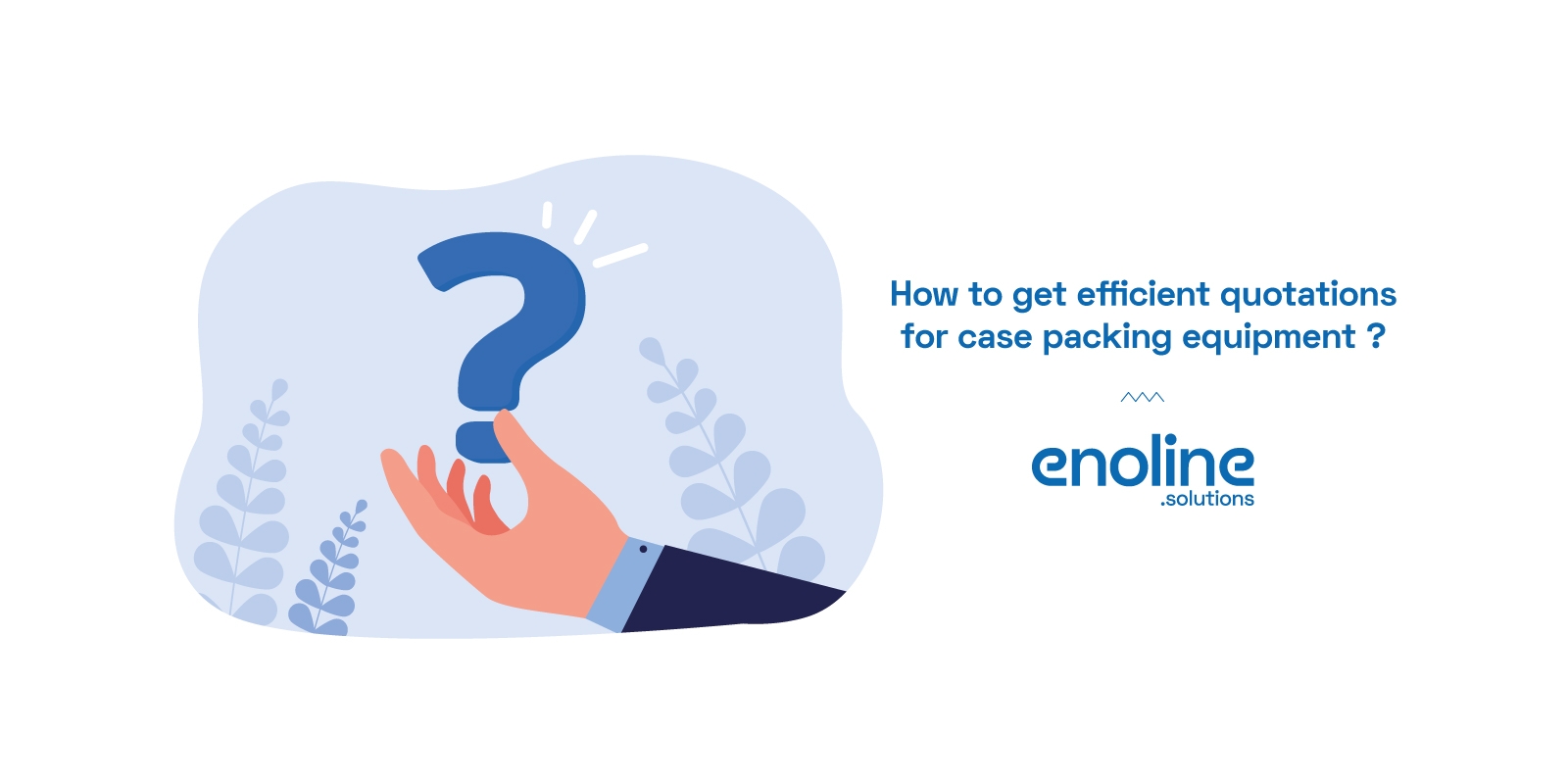How to get efficient quotations for case packing equipment ?

Communication plays a crucial role in all industries and creates an understanding between people. While translating automation equipment and secondary packaging material by Orignal Equipment Manufacturers (OEMs), original intended meaning might get altered. The failure to have a common understanding between requirements and expectations may affect the product and costs even more to get rectified. The gap is not easy to eliminate even when companies provide explicit content about their products since they are not in the same place. The gaps may also result from how each party receives and understands information. The best strategy is to ensure you and the OEM partner have a common ground regarding the specifications and requirements.
The following are a few critical questions that will help promote productive working with an OEM :
How do I ensure the OEM partner gets a clear understanding of packaging information ?
One of the best suggestions is to share some of your product's packaging materials. When your OEM partner feels what you want, it reduces the risks of developing wrong scopes. The OEM will be able to interact with the natural product's physical attributes. The material qualities are vital since they may vary from one product to another; hence it's good that your OEM fits your product to the required application. Another benefit of sending samples is to ensure OEM's automation equipment requirements are perfect for your product.
It's also essential to ensure that you deliver your samples upon submitting your request for a piece of packaging equipment. Note that packaging equipment manufacturers must work on much detailing and helpful information, such as samples, which are only relevant in the initial stages.
After the OEMs have gathered enough information, they will start building the packaging automation application, and this step consists of the most critical functions. The other step is to test your packaging automation application which is the final stage, and it's hard to eliminate the significant errors.
Drawings are also another great way to go about packaging automation application development. Sometimes the company may be a startup, or the product may be new in the market. In such cases, you can share drawings of the products and mainly include the measurements. Drawings may not be perfect, but they help OEMs understand what is expected. OEMs can even go a step further to develop a sample product from your measurements; when submitting drawings, it is advisable to have a professional do the drawing to get every product attribute.
Aren't spreadsheets good enough ?
Spreadsheets are amongst the best ways to share information that involves figures. Spreadsheets are good at categorizing, but they are just like any other form of data presentation and do not have physical quantities. Although spreadsheets are commonly used in specifications and requirements, data implementation relies on how they are interpreted.
For example, if the person reading the data mistakes the height for the product's width, they will make the wrong product shape and patterns. On the other hand, with physical products, you get the correct data since the samples have the exact measurements minimizing the cases of wrong sizes.
How does the product or package orientation affect the product packaging mechanism ?
The orientation determines the actions the machine may be able to take.
Factors influenced by product orientation include HMI side selection, machine orientation, machine in feed, and graphics material.
How relevant are graphics on the case ?
Graphics on the case are as important as the marketing channel you choose for your product. Graphics represent the brand's identity and should be something customers can identify from a distance. The graphics on the outer case of a product influence how appealing the products appear on the shelves.
Graphics also act as a brand identity for most, if not all, customers. For example, if you are dealing in milk products and your logo and packaging material has a cow feeding on grass, then people will identify all products with the image of your company.
How important is the plant layout and footprint to the OEM ?
The plant layout is as important as the quality of the machine you want as a manufacturer. All manufacturers have a specific area designated for the machine; however, OEMs work based on specifications. If you fail, if you inform your OEM partner of the size in mind, they could develop a proposal for a giant machine that may not fit in. In some cases, you disqualify the company while they may have developed a well-fitting machine if they had the information. OEMs and clients must take time and discuss the plant layout to understand each other in size.
Other important factors to inform the OEM partner include :
- How the equipment is expected to be fitted in. It should include both the width, height, and even floor considerations.
- The limitations of the plant layout. For example, how far the equipment will sit from others.
- The source of your products is also essential.
- The position where other components, such as labelers and bar codes, are placed.
Ensuring better results for customers
It is not completely easy to eliminate the gap in communication between the OEM and manufacturers. The difference in understanding, writing, and language affect how information is received and interpreted. However, what we can do to help develop common ground between OEM and manufacturers is to avoid all their commonly identified issues.
Here at Enoline, we want to make sure that you will get what you desire, that is why we can send a team directly to your factory to gather all necessary information and get back to you with the perfect solution you need.
We help you find the best solution you need ! Contact us now to get a free quotation